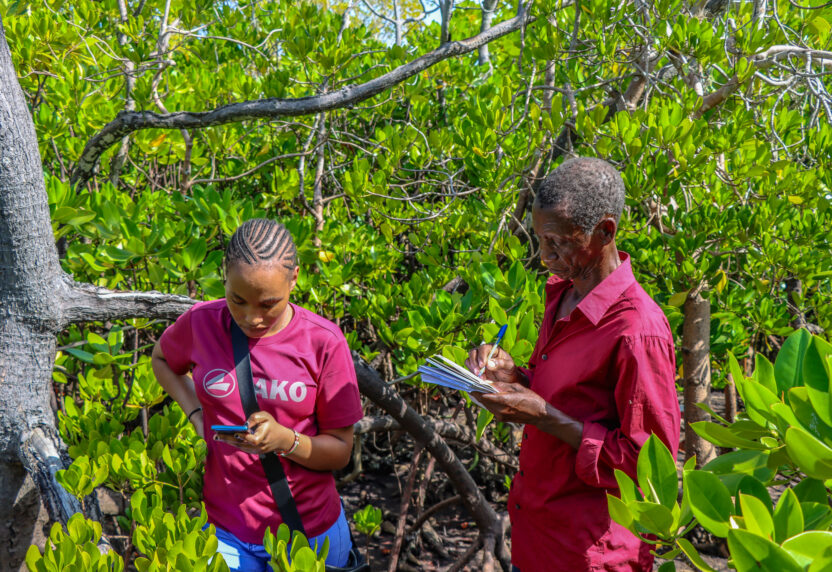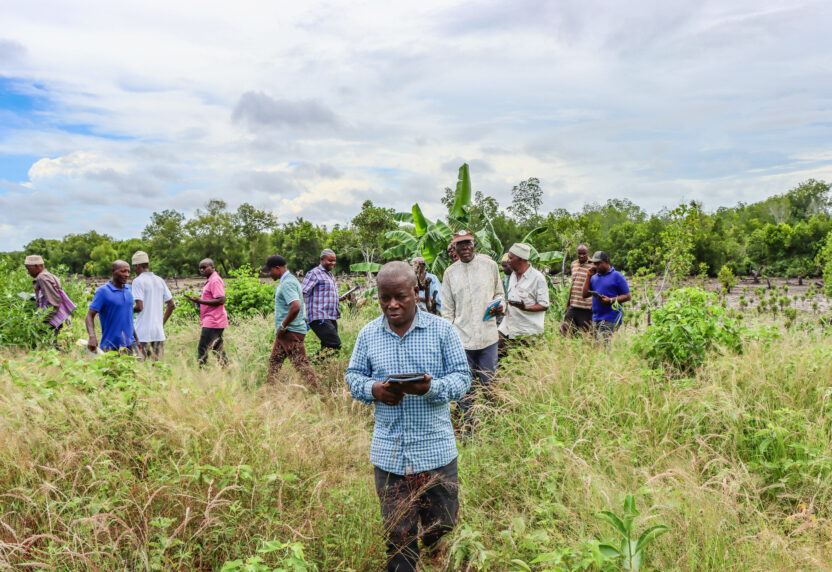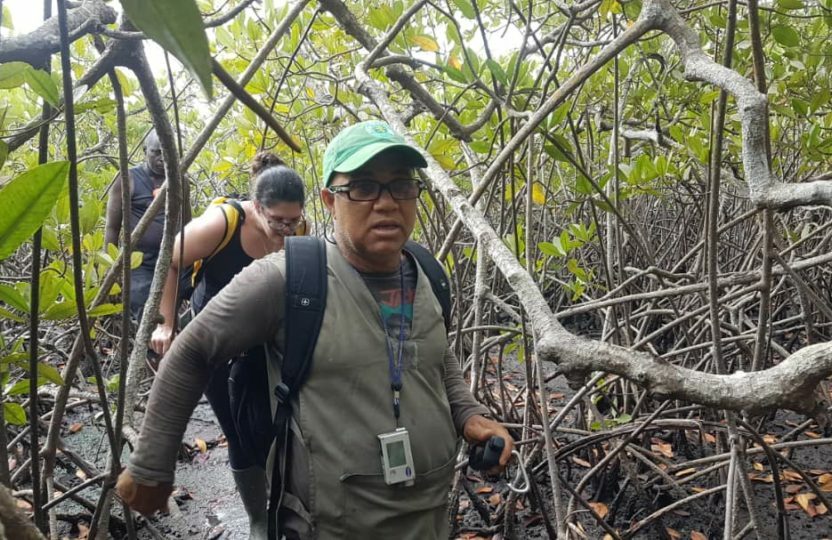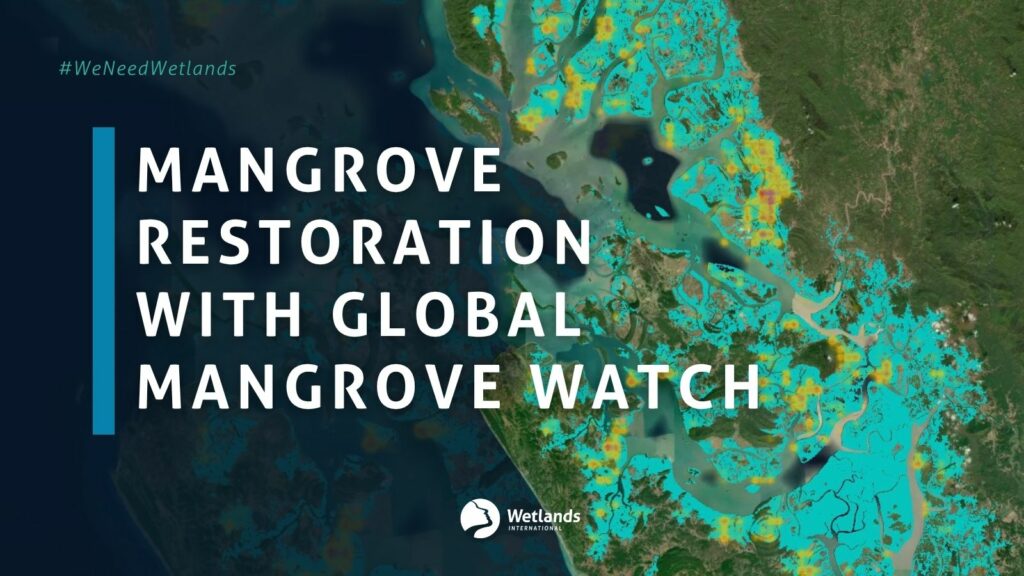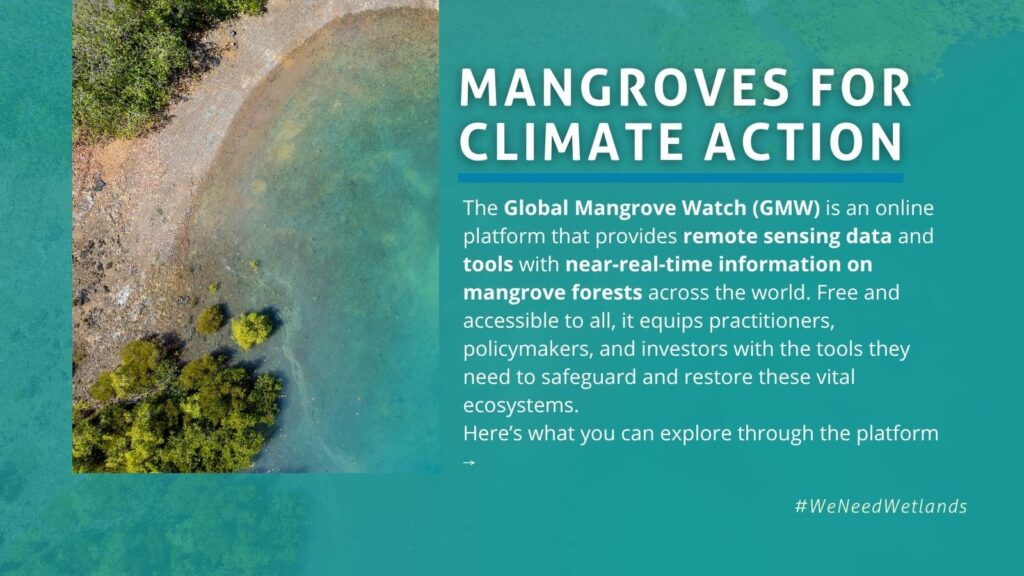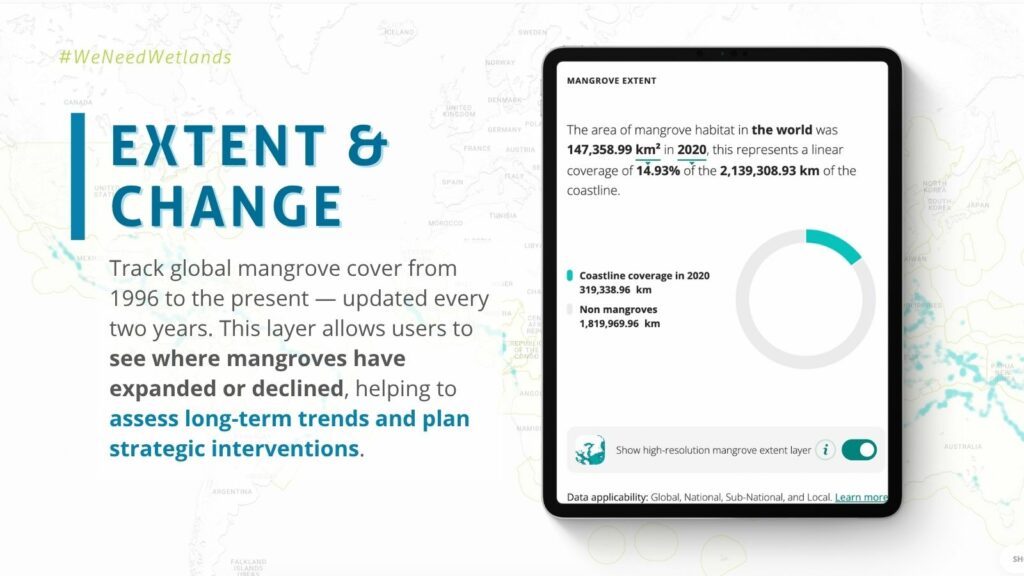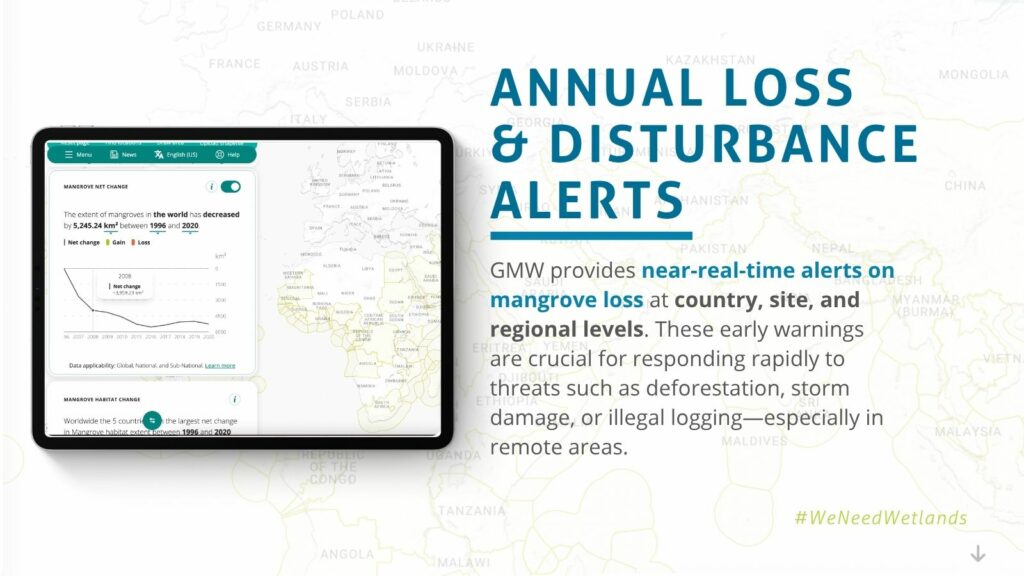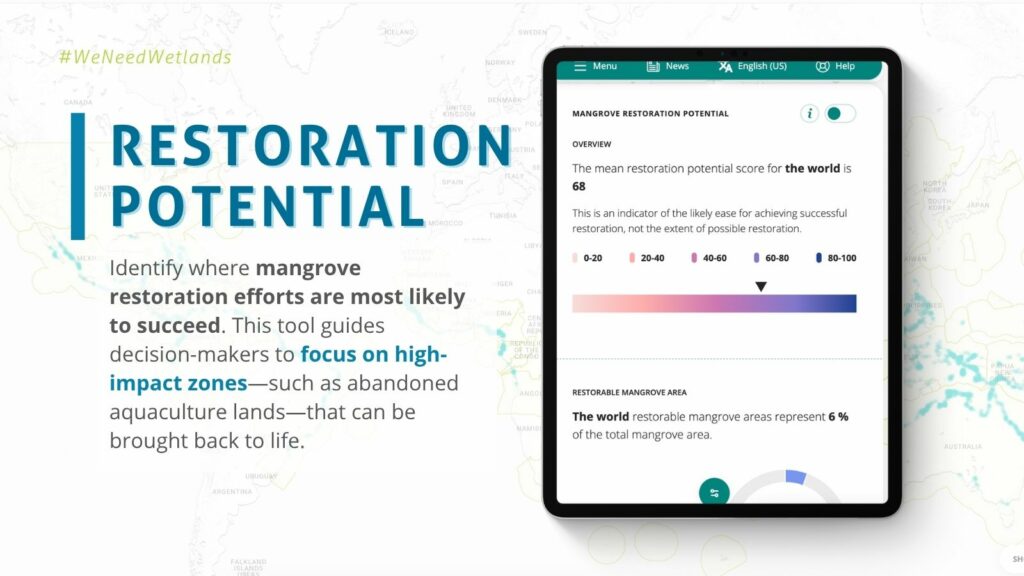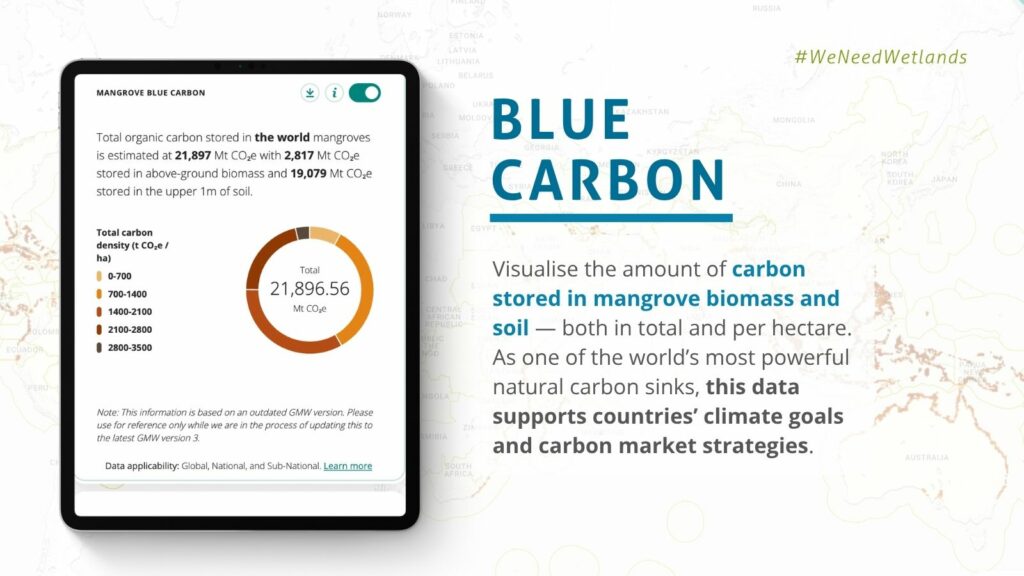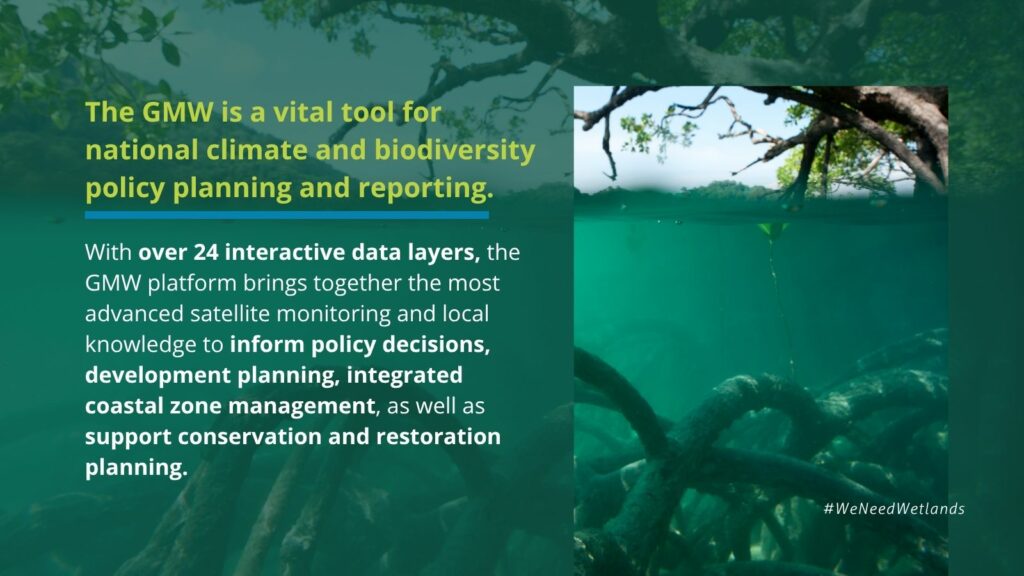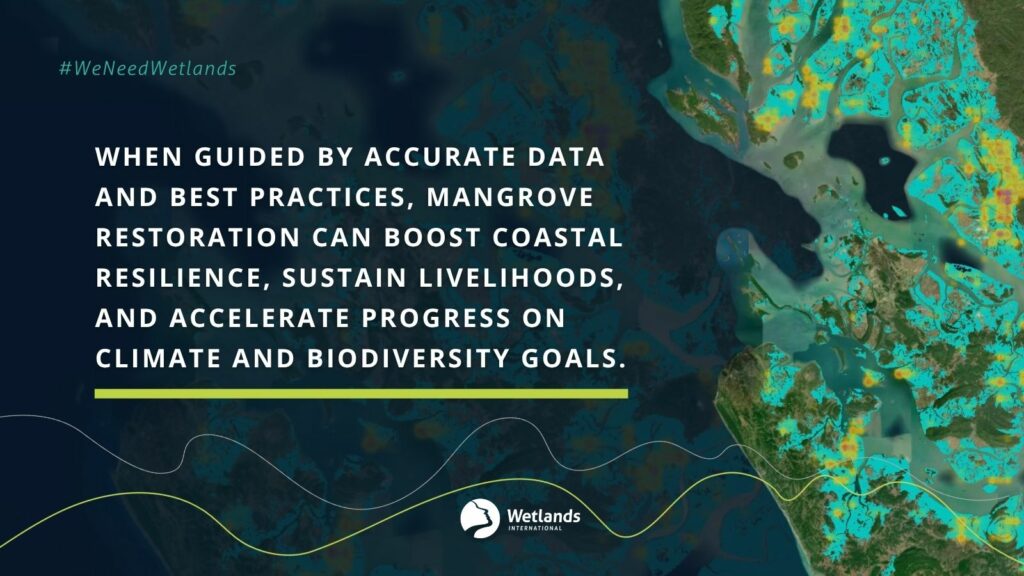
Video: Mangrove Deforestation Alerts – Turning the Tide on Mangrove Loss
The Global Mangrove Watch platform provides near-real‑time monthly alerts detecting mangrove loss across the globe—including Africa and expanding into Asia-Pacific and the Americas. With ~92% accuracy and monthly updates, these alerts deliver timely, actionable data to conservation teams, local authorities, and communities.
The Mangrove Disturbance Alerts pinpoints areas that are experiencing mangrove loss. Using satellite data and machine learning, GMW spots disturbances, whether from illegal logging, storm damage, erosion, or agricultural conversion, within days. They can be used by local authorities and local conservation agencies to monitor mangroves and to help them rapidly plan interventions in impacted areas.
The alerts are shown as a cluster of points, with colours varying against a heat map indicating the number of alerts in an area. The mangrove loss alert system has an estimated overall accuracy of 92 percent , which makes the accuracy of the alerts higher compared to other alerts efforts. The alerts are updated monthly, from January 2020 to present, and past alerts can be reviewed through the platform.
50% of the world’s mangroves are currently monitored by the loss alerts and it will soon become available for other regions.
In the video below, conservation staff from Tanzania and Kenya explain how Global Mangrove Watch alerts help them detect mangrove losses. They were able to investigate the site promptly — using the data as a trigger for ground verification and early response.
Watch the video to learn more:
- How mangrove alerts work and where they’re active
- Why they’re game changers for conservation and restoration
- How communities, rangers, and governments can use them to act fast
Explore the platform
Go to Global Mangrove Watch and discover mangrove alerts in your country.
This video was developed through the Save our Mangroves Now project, an initiative by:

User stories Mangrove Deforestation Alerts:
Related content
Mangrove Restoration With Global Mangrove Watch
A slideshow with 8 images
The slider is set to loop infinitely.
For more information, contact
Susanna Tol



